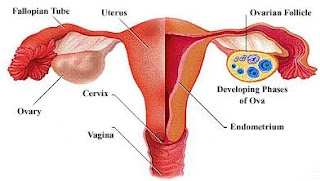BASIC FIRST AID SKILLS WE SHOULD ALL KNOW
We must have been caught in situation demanding immediate attention: If not so, you must have witnessed emergency responses and how the occurrences were. There are a number of basic first aid skills that we all ought to know. Unfortunately not all of us were scouts while in school, and those with such vital information seem to be mean.
Some of us know how it feels to save lives. While others know as well how it hurts to lose a someone even with efforts to increase their chances of survival.
1) STOPPING NOSE BLEEDING
a) Sit down and firmly pinch the soft part of your nose (above your nostrils) for 10 to 15 minutes.
b) Lean forward and breathe through your mouth.
c) Place a cold cloth on the bridge of your nose to reduce pressure in the blood vessels thus discouraging further bleeding.
2) TREATING INSECT STING
Stings were traditionally treated with cold clothes to help reduce pain and swelling. Anti-inflammatories like motrin and advil may be of help too. Itching and redness can be treated with hydrocortisone cream or calamine lotion.
3) SAVING A CHOCKING PERSON
Severity of choking can be determined by whether or not the victim is able to speak. In order to administer the heimlich maneuver: Wrap your arms around the victim, placing a fist in between the ribcage and the person’s belly button then deliver a quick upward thrust. Repeatedly do the same procedure till the foreign object is comes out. A point worth noting is that this technique is only designed to apply on adults.
4) TREATING BURNS
Immediately immerse the burn in cold water for about 10 minutes. Then gently apply petroleum jelly two to three times daily. Never use ointments, toothpaste or butter to the burn, they may cause infections.
5) PERFORMING CPR (Cardio-pulmonary Resuscitation).
Cardiac arrest is one of the most common causes of death in the world. And claims have it that CPR can increase survival rates by 300%.
i) CHEST COMPRESSIONS
Here is what to do suppose the cardiac arrest victim has stopped breathing; place the heel of your hand in the middle of the victim’s chest, and place the other hand on top – interlacing your fingers.
ii) RESCUE BREATHING
After 30 compressions, the victim needs an open airway for breathing. Pinch the victim’s nose closed to prevent oxygen loss, and make a seal over the victim's mouth using your mouth (mouth-to-mouth). Exhale a big breath inside the victim's mouth. The procedure is repeated after the victim's chests fall in place. Should the victim’s chest fail to rise, kindly re-position the victim's head and try again.
7) CLEANING A WOUND
Whether a small scrape, a burn, or a deep cut, the first step to recovery should always be to cleaning it so as to prevent infection. Any infected wound can leads to more serious health problems. It is therefore important to sterilize it as immediate as possible.
Before anything, ensure your hands are clean; this prevents chances of harmful bacteria on your hands getting in the wound. Then, using a clean cloth, gently apply pressure onto the wound until the bleeding stops. If bleeding continues and oozes through the material, add another layer and seek medical attention soonest.
If bleeding stops, rinse the wound with water then apply an antibiotic cream or ointment to help keep the skin moist and further reduce the risk of infection.
Minor cuts don’t require bandages but many wounds do. Bandages not only reduce bleeding but also help in containing blood and keeping germs away.
drop your Comments below and please do Share!!!
Some of us know how it feels to save lives. While others know as well how it hurts to lose a someone even with efforts to increase their chances of survival.
1) STOPPING NOSE BLEEDING
a) Sit down and firmly pinch the soft part of your nose (above your nostrils) for 10 to 15 minutes.
b) Lean forward and breathe through your mouth.
c) Place a cold cloth on the bridge of your nose to reduce pressure in the blood vessels thus discouraging further bleeding.
2) TREATING INSECT STING
Stings were traditionally treated with cold clothes to help reduce pain and swelling. Anti-inflammatories like motrin and advil may be of help too. Itching and redness can be treated with hydrocortisone cream or calamine lotion.
3) SAVING A CHOCKING PERSON
Severity of choking can be determined by whether or not the victim is able to speak. In order to administer the heimlich maneuver: Wrap your arms around the victim, placing a fist in between the ribcage and the person’s belly button then deliver a quick upward thrust. Repeatedly do the same procedure till the foreign object is comes out. A point worth noting is that this technique is only designed to apply on adults.
4) TREATING BURNS
Immediately immerse the burn in cold water for about 10 minutes. Then gently apply petroleum jelly two to three times daily. Never use ointments, toothpaste or butter to the burn, they may cause infections.
5) PERFORMING CPR (Cardio-pulmonary Resuscitation).
Cardiac arrest is one of the most common causes of death in the world. And claims have it that CPR can increase survival rates by 300%.
i) CHEST COMPRESSIONS
Here is what to do suppose the cardiac arrest victim has stopped breathing; place the heel of your hand in the middle of the victim’s chest, and place the other hand on top – interlacing your fingers.
ii) RESCUE BREATHING
After 30 compressions, the victim needs an open airway for breathing. Pinch the victim’s nose closed to prevent oxygen loss, and make a seal over the victim's mouth using your mouth (mouth-to-mouth). Exhale a big breath inside the victim's mouth. The procedure is repeated after the victim's chests fall in place. Should the victim’s chest fail to rise, kindly re-position the victim's head and try again.
7) CLEANING A WOUND
Whether a small scrape, a burn, or a deep cut, the first step to recovery should always be to cleaning it so as to prevent infection. Any infected wound can leads to more serious health problems. It is therefore important to sterilize it as immediate as possible.
Before anything, ensure your hands are clean; this prevents chances of harmful bacteria on your hands getting in the wound. Then, using a clean cloth, gently apply pressure onto the wound until the bleeding stops. If bleeding continues and oozes through the material, add another layer and seek medical attention soonest.
If bleeding stops, rinse the wound with water then apply an antibiotic cream or ointment to help keep the skin moist and further reduce the risk of infection.
Minor cuts don’t require bandages but many wounds do. Bandages not only reduce bleeding but also help in containing blood and keeping germs away.
drop your Comments below and please do Share!!!








Comments
Post a Comment